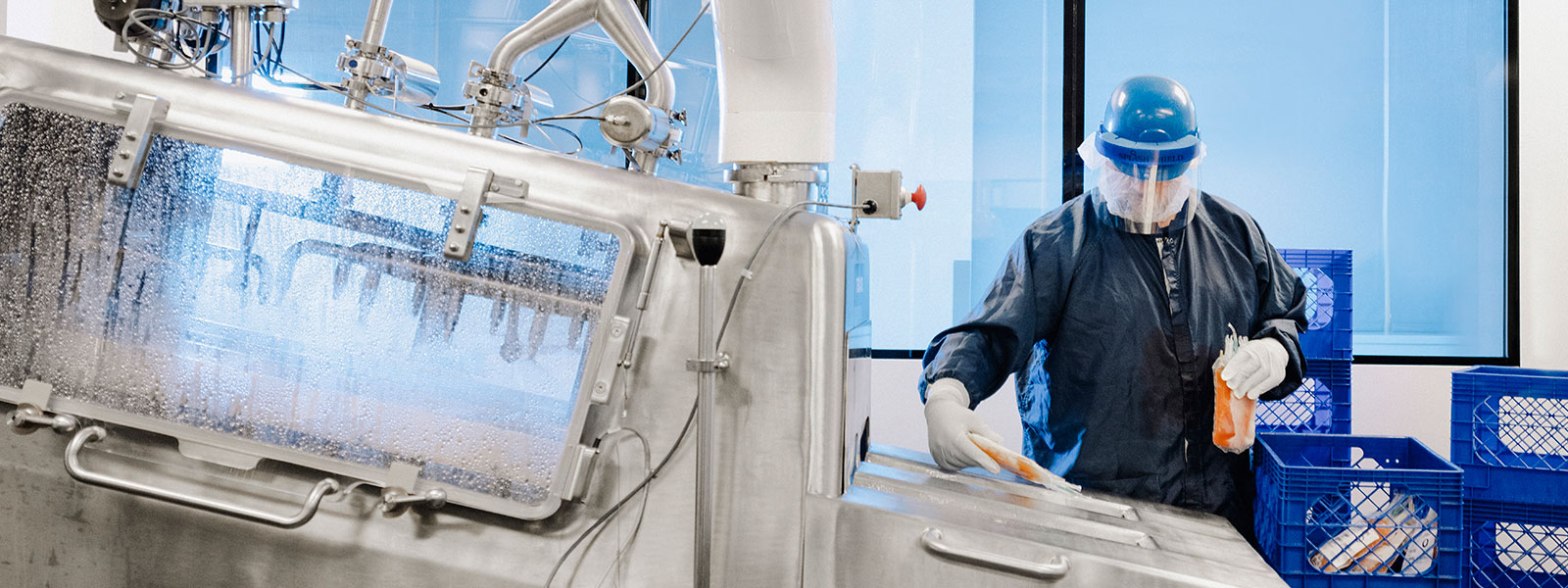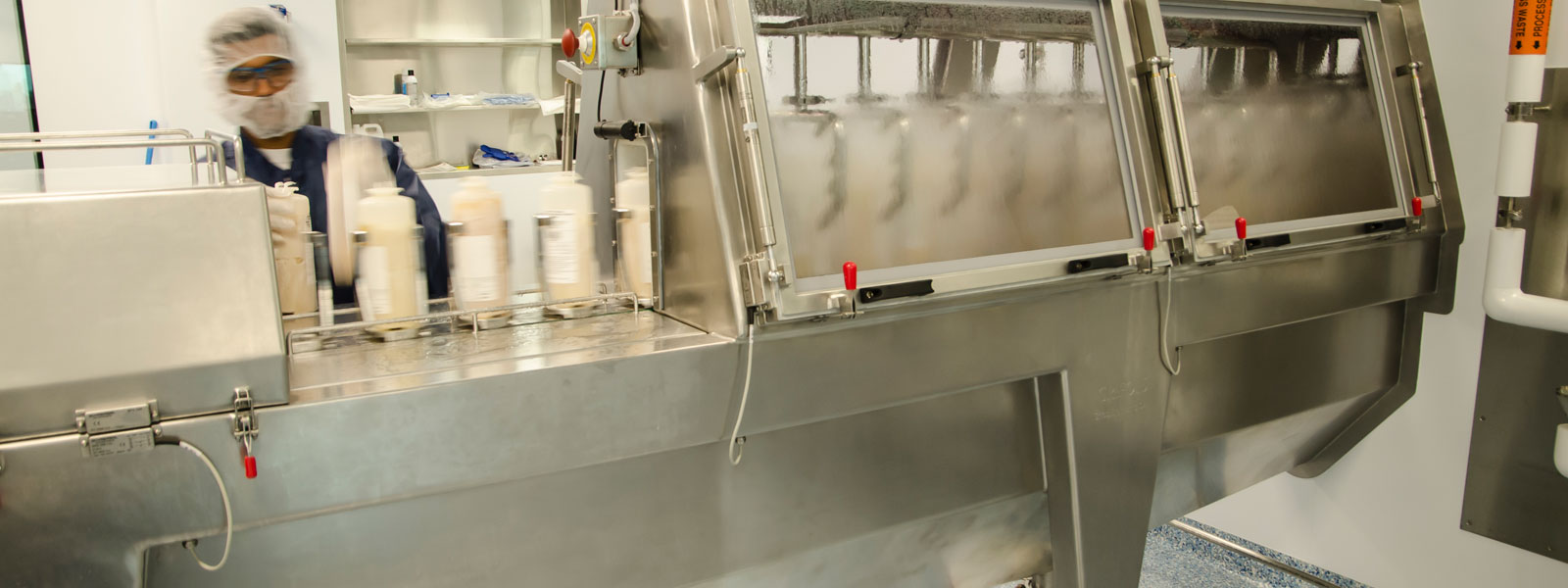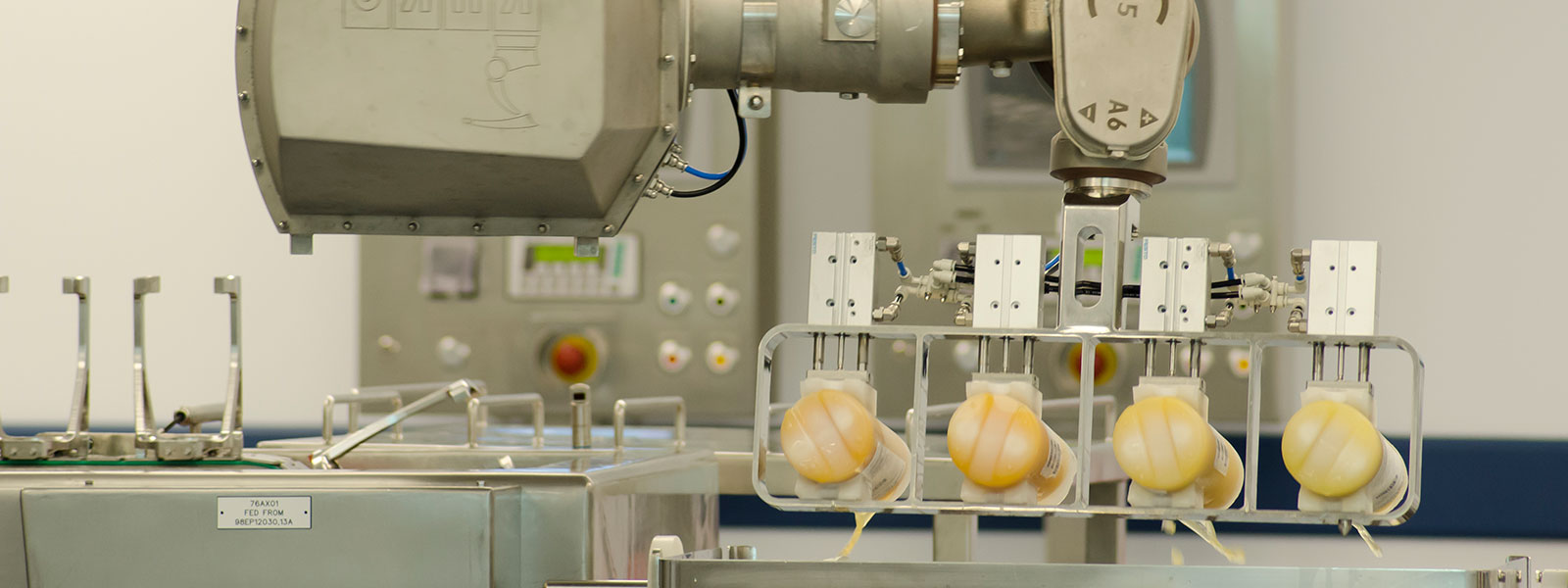ABO® y PBO®
Sistemas de apertura automatizada de botellas y bolsas de plasma
Ficha técnica
Tipo de innovación: Sistema
Ámbito: Bioingeniería
Líder de innovación: Liderazgo compartido
Año: 2000
Etapa: 1972-2002
Difusión: Internacional
Impacto económico: Alto
Nivel de innovación: Disruptivo
Patente: Sí
Relaciones interdisciplinares: -
Los derivados del plasma desempeñan un papel esencial en el tratamiento de una gran variedad de enfermedades crónicas, raras o emergentes. El proceso de fabricación de estos medicamentos biológicos es largo y complejo, y la seguridad es el factor prioritario. Sin embargo, en los años 90 todavía se llevaba a cabo manualmente la primera etapa del proceso de fabricación —la apertura y el vaciado de las bolsas y botellas de plasma—. Conscientes del riesgo de contaminación del producto y lesión de los operarios que esto entrañaba, Grifols decidió desarrollar una solución automatizada.
ABO®: sistema de apertura de botellas automático
La apertura y el vaciado manual de los envases de plasma congelado exigían trabajar a temperaturas muy bajas. Además, los operarios se exponían a lesionarse con los instrumentos cortantes que empleaban para abrir los recipientes. La primera etapa, desarrollada por Víctor Grifols i Lucas y el equipo de ingeniería aplicada, consistió en la automatización del proceso de corte de la parte superior de las botellas de plasma. A esto lo siguió, en los años 2000 y 2001, una serie de innovaciones importantes que automatizaron también el proceso de vaciado de las botellas de plasma congelado. Estas se introducían en un túnel, dentro del cual se rociaban con agua caliente para descongelar la capa de plasma en contacto directo con la pared de la botella y facilitar así el vaciado. A continuación, las botellas se lavaban y secaban antes de cortar su parte superior para abrirlas. Por último, un brazo robótico recogía las botellas y vaciaba el plasma en unos tanques.
El perfeccionamiento de este proceso fue una tarea ardua. El plasma es una sustancia muy inestable, por lo que era esencial calibrar de manera exacta la temperatura y la duración de cada aspecto del proceso con el fin de garantizar que el producto se pudiese extraer de las botellas abiertas sin deterioro alguno. Para ello se recurría a un prototipo manual; sin embargo, a este prototipo aún le faltaba por automatizar la fase de vaciado, algo que se consiguió tras una estrecha colaboración multidisciplinar entre el equipo de ingeniería y los técnicos de planta.
Innovación interna para clientes externos
Una vez desarrollado y afinado el sistema ABO®, también se comercializó a clientes externos. El primero fue una empresa farmacéutica alemana, que conoció de manera fortuita de la existencia de este innovador sistema y sus ventajas a raíz de un proceso de auditorías cruzadas. A día de hoy, Grifols ha comercializado casi una veintena de sistemas ABO®.
De botellas a bolsas
La automatización del vaciado de bolsas de plástico flexibles planteó un reto aún mayor, pero una visita realizada para instalar los sistemas ABO® en las empresas Sanquin (Holanda) y CAP DCF (Bélgica) abrió la puerta a nuevas posibilidades. Ambas empresas utilizaban sistemas de rodillos, y este enfoque acabó proporcionando la base para la automatización del proceso de apertura y vaciado de bolsas de plasma. El resultado fue el Plasma Bag Opener o PBO®, un sistema totalmente automatizado que extraía y separaba el plasma de las bolsas utilizando un sistema de rodillos, lo vaciaba en tanques de procesamiento y separaba el material desechable para su gestión como residuo biológico.

Seguridad ante todo
La motivación prioritaria para el desarrollo de los sistemas ABO® y PBO® era mejorar la seguridad. Estos sistemas protegen la salud y la seguridad del personal, ya que no requieren trabajar a temperaturas muy bajas y reducen el riesgo de accidentes asociados al uso de instrumentos cortantes. Además, contribuyen a garantizar la seguridad del plasma y sus derivados al disminuir el riesgo de contaminación bacteriana.
“Estos sistemas protegen la salud y la seguridad del personal, ya que no requieren trabajar a temperaturas muy bajas y reducen el riesgo de accidentes asociado al uso de instrumentos cortantes. Además, contribuyen a garantizar la seguridad del plasma y sus derivados al disminuir el riesgo de contaminación bacteriana.”
Bibliografía
Roura Adell, S., Sánchez Sabaté, J.R. y Grifols Lucas, V. (2006). Procedimiento y aparato para el vaciado de recipientes de plasma sanguíneo. (Oficina Española de Patentes y Marcas Patente Nº ES2245836). Enlace.
Roura Adell, S., Faba Vilella, M. y Boira Bonhora, J. (2011). Dispositivo para vaciar una bolsa de producto de sangre. (Oficina Española de Patentes y Marcas Patente Nº ES201131265). Enlace.
Roura Adell, S., Faba Vilella, M. y Boira Bonhora, J. (2011). Método y dispositivo vaciador de bolsas de producto sanguíneo. (Oficina Española de Patentes y Marcas Patente Nº ES2370884). Enlace.
Grifols, S.A. (2013, april). Plasma Bag Opener, PBO®. Nuevo desarrollo de Grifols Engineering para el lavado, la descongelación y el vaciado de bolsas de productos biotecnológicos. [Nota de prensa].
Boira Bonhora, J., Casanova Montpeyo, O. y Pages Becerra, D. (2017). Dispositivo automatizado vaciador de bolsas de producto sanguíneo congelado. (Oficina Española de Patentes y Marcas Patente Nº ES20170382526T). Enlace.
Oriols Gaja, J., Fleta Coit, D. y Gomez Flores, J.L. (2017). Dispositivo automatizado vaciador de recipientes equipado con medios para la recolección y el vaciado por gravedad de recipientes y que dispone de una zona de recolección de producto. (Oficina Española de Patentes y Marcas Patente Nº ES20170382714). Enlace.
Oriols Gaja, J., Fleta Coit, D. y Gomez Flores, J.L. (2017). Aparato vaciador por gravedad de botellas que contienen producto sanguíneo congelado con una unidad de comprobación de vaciado y procedimiento de vaciado. (Oficina Española de Patentes y Marcas Patente Nº ES20170382713). Enlace.

